Abstract
Freshwater, sewage, and fecal samples from various sources were examined for Rhodococcus coprophilus, associated actinomycetes, Escherichia coli, and fecal streptococci. Rhodococcus coprophilus was isolated consistently from feces of farm animals, poultry reared in proximity to farm animals, freshwater, and wastewater polluted with animal fecal wastes. It was not isolated from samples of human feces. The ratio of R. coprophilus total actinomycetes was higher in feces from cattle, sheep, ducks, and geese than in specimens from pigs, horses, and fowl. In samples from two freshwater streams polluted by fecal material from farm animals, the ratios of R. copropilus to total actinomycetes were similar to those found in fecal specimens from cattle and sheep. Ratios of fecal coliform to fecal streptococci could not distinguish between fresh human and animal fecal samples and, furthermore, were not reflected in the stream waters polluted by animal fecal material. R. coprophilus has potential in water and dairy bacteriology as a specific indicator organism of fecal pollution due to farm animal wastes.
Full text
PDF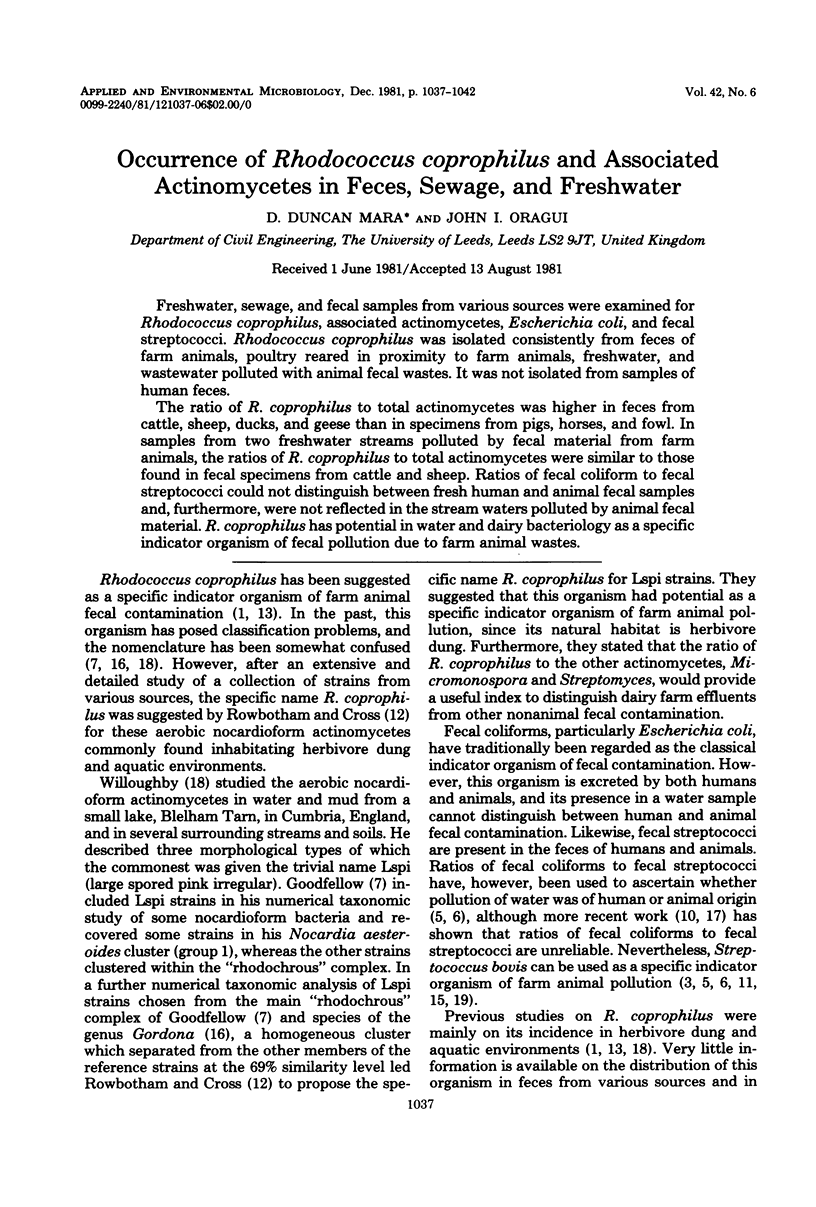
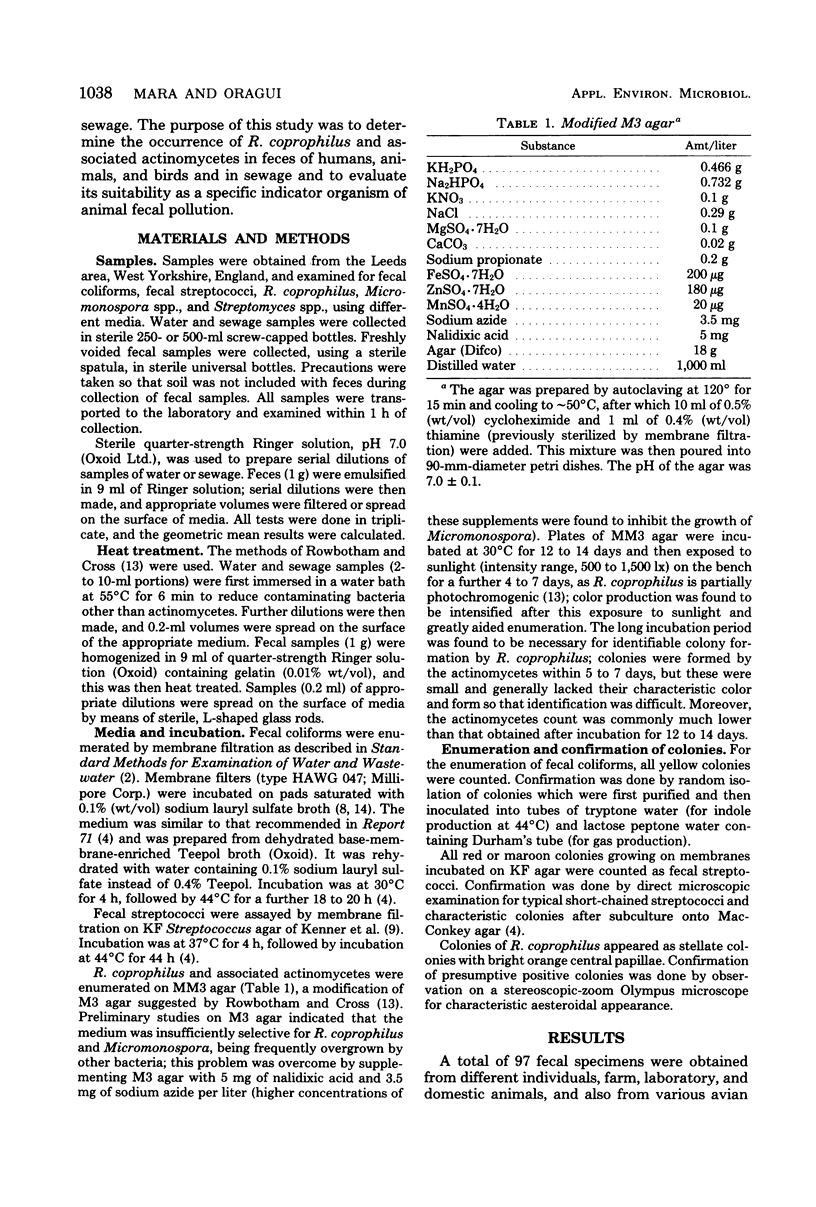
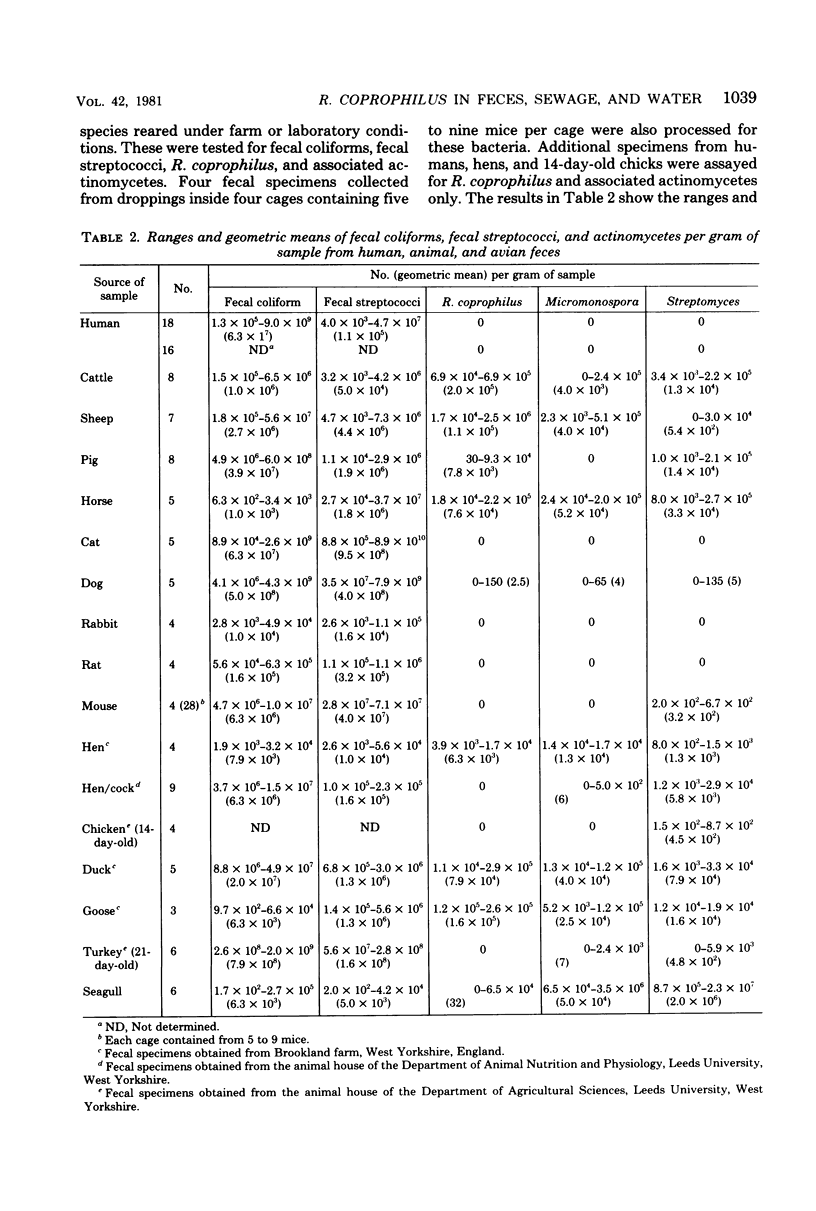
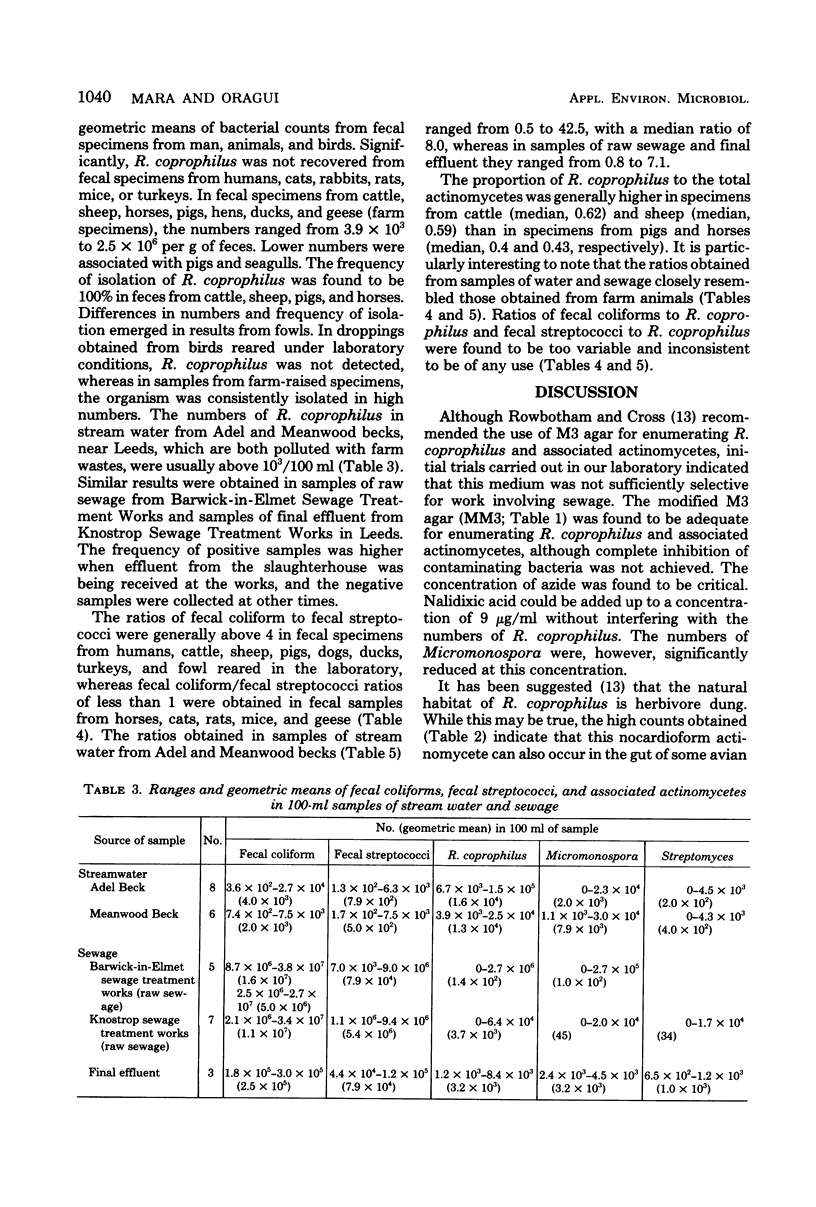
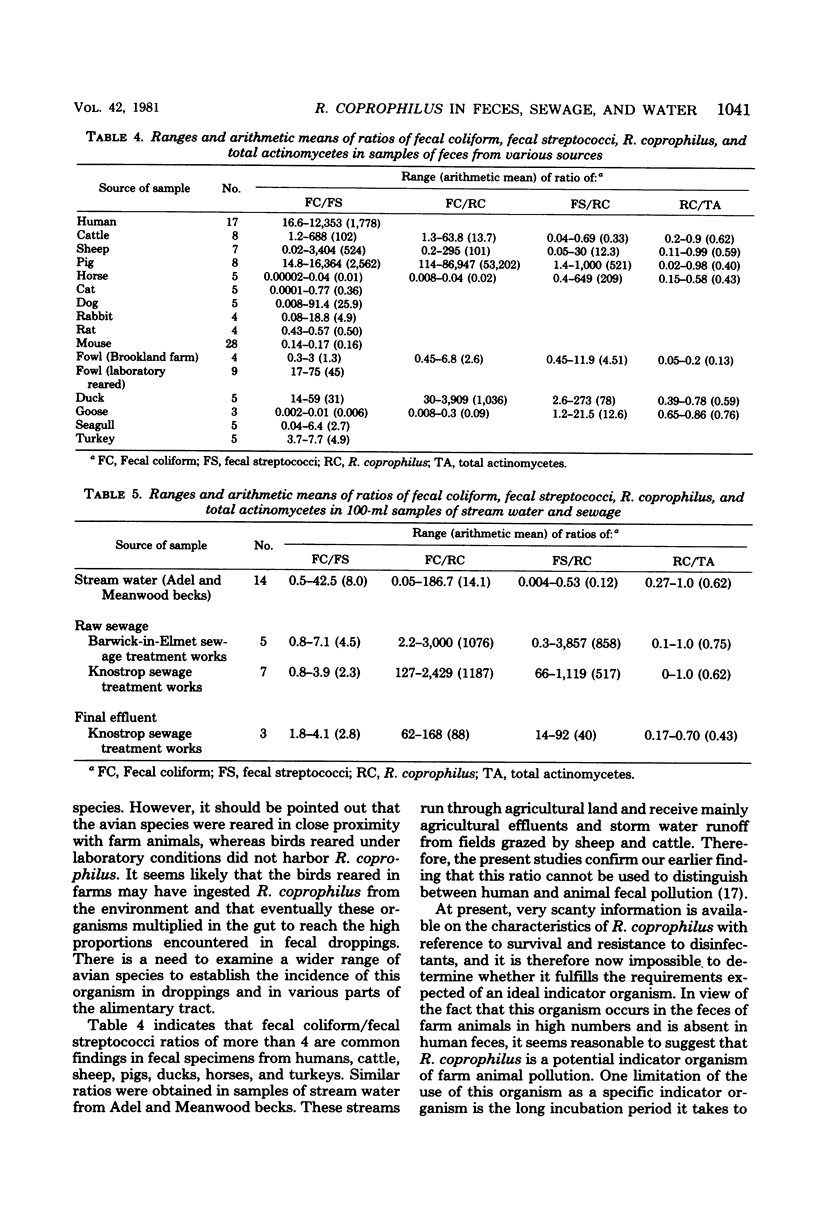
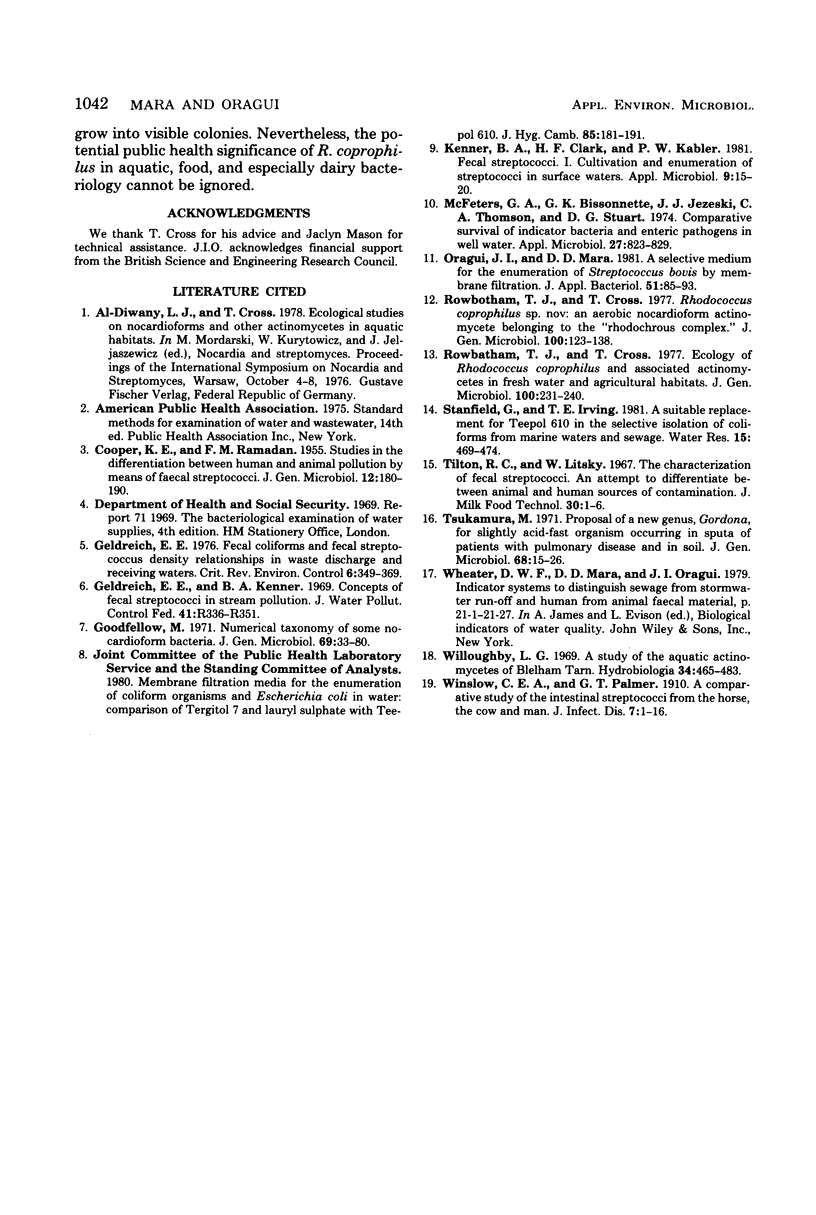
Selected References
These references are in PubMed. This may not be the complete list of references from this article.
- COOPER K. E., RAMADAN F. M. Studies in the differentiation between human and animal pollution by means of faecal streptococci. J Gen Microbiol. 1955 Apr;12(2):180–190. doi: 10.1099/00221287-12-2-180. [DOI] [PubMed] [Google Scholar]
- Geldreich E. E., Kenner B. A. Concepts of fecal streptococci in stream pollution. J Water Pollut Control Fed. 1969 Aug;41(8 Suppl):R336+–R336+. [PubMed] [Google Scholar]
- Goodfellow M. Numerical taxonomy of some nocardioform bacteria. J Gen Microbiol. 1971 Nov;69(1):33–80. doi: 10.1099/00221287-69-1-33. [DOI] [PubMed] [Google Scholar]
- KENNER B. A., CLARK H. F., KABLER P. W. Fecal Streptococci. I. Cultivation and enumeration of Streptococci in surface waters. Appl Microbiol. 1961 Jan;9:15–20. doi: 10.1128/am.9.1.15-20.1961. [DOI] [PMC free article] [PubMed] [Google Scholar]
- McFeters G. A., Bissonnette G. K., Jezeski J. J., Thomson C. A., Stuart D. G. Comparative survival of indicator bacteria and enteric pathogens in well water. Appl Microbiol. 1974 May;27(5):823–829. doi: 10.1128/am.27.5.823-829.1974. [DOI] [PMC free article] [PubMed] [Google Scholar]
- Oragui J. I., Mara D. D. A selective medium for the enumeration of Streptococcus bovis by membrane filtration. J Appl Bacteriol. 1981 Aug;51(1):85–93. doi: 10.1111/j.1365-2672.1981.tb00911.x. [DOI] [PubMed] [Google Scholar]
- Tsukamura M. Proposal of a new genus, Gordona, for slightly acid-fast organisms occurring in sputa of patients with pulmonary disease and in soil. J Gen Microbiol. 1971 Sep;68(1):15–26. doi: 10.1099/00221287-68-1-15. [DOI] [PubMed] [Google Scholar]


